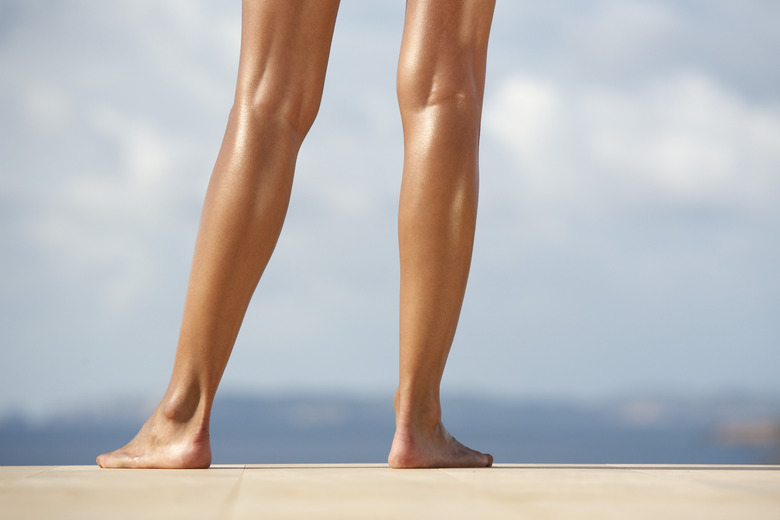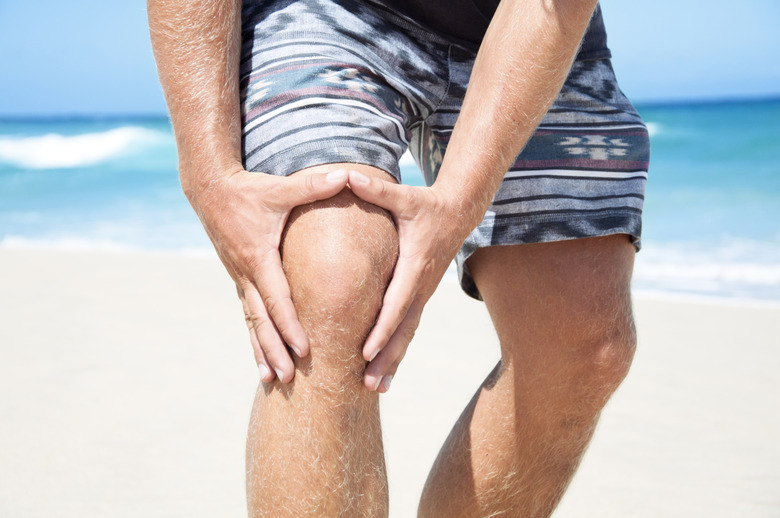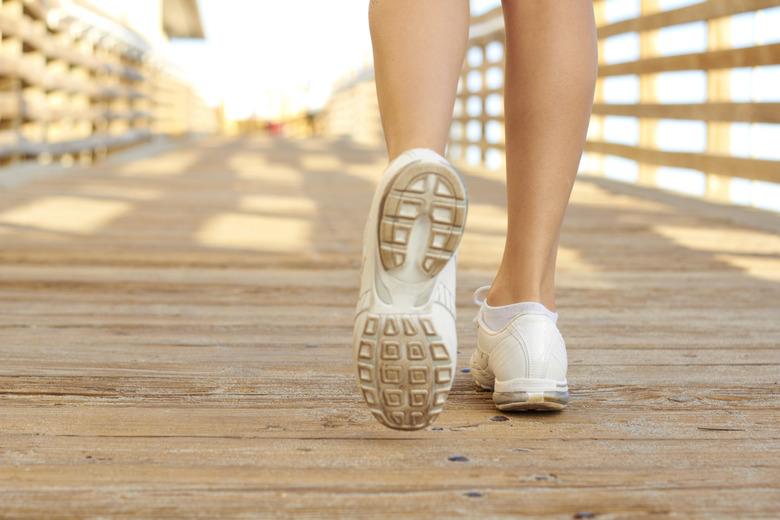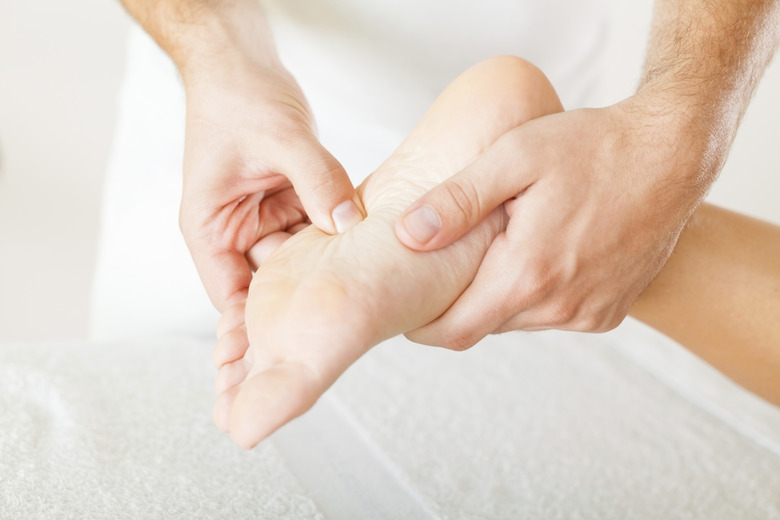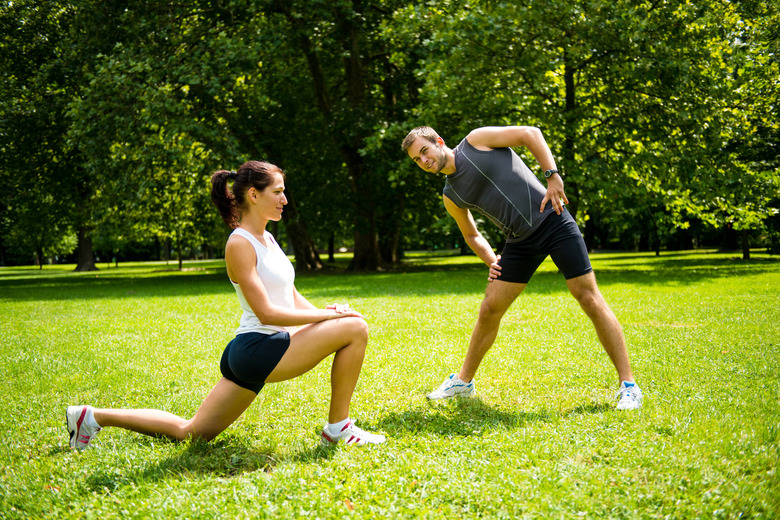What Parts Make Up The Human Leg?
The human leg is a complicated bit of machinery. It is only able to do its job through the complicated interaction of several different parts. Each part of the leg is made up of its own component parts. Rigid structure is granted by bone, muscle provides ambulatory power and the tendons and ligaments tie everything together.
Leg Anatomy Centers Around the Knee
Leg Anatomy Centers Around the Knee
The knee joint is located where the femur and tibia, two of the most important parts of your leg anatomy, come together. The patella, or kneecap, covers up the forward-facing aspect of the joint, and two major ligaments create the stabilizing force in the knee. The anterior cruciate ligament helps the knee to stay stable as it rotates, and it anchors the femur so it can't slide back against the tibia. The posterior cruciate ligament is another stabilizer. It combines with the anterior ligament to ensure the femur and the tibia don't slide against each other in a way they weren't intended to.
Defining Your Lower Leg
The lower leg is given its structure by two bones. The larger bone is in the front of the lower leg and is called the tibia; your shin is part of this bone. The fibula is the smaller bone toward the back of the leg. The primary muscles in this area are referred to as the calf, which is actually a group of several individual muscles. The prominent, easily visible muscle on the back of your leg is called the gastrocnemius.
The Structure of Your Ankle
The ankle is the connection joint between the lower portion of the leg and the foot. A series of seven ligaments creates the connections around the ankle. Behind the ankle and connecting the foot to the rear of the leg is the Achilles tendon. This is the largest tendon that humans have, and it is critical to the walking process. Injuries to the Achilles tendon are quite serious.
Upper Leg
The upper leg is home to some of the largest muscles in the body. These muscles give humans the power to propel themselves while walking or jumping in an upright position. The leg muscles are typically divided into three major groups: The glutes include the muscles that attach to and rotate the hip joint. The quadriceps are the four large muscles on the front of the leg. The back of the thigh includes the three muscles known as the hamstrings. All of these muscles are anchored around the largest bone in the human body, the femur. Connective tissue above and below the femur joins it to the pelvis and lower leg to form the hip and knee joints.
Cite This Article
MLA
Fredrick, Hans. "What Parts Make Up The Human Leg?" sciencing.com, https://www.sciencing.com/parts-make-up-human-leg-8410903/. 25 July 2018.
APA
Fredrick, Hans. (2018, July 25). What Parts Make Up The Human Leg?. sciencing.com. Retrieved from https://www.sciencing.com/parts-make-up-human-leg-8410903/
Chicago
Fredrick, Hans. What Parts Make Up The Human Leg? last modified March 24, 2022. https://www.sciencing.com/parts-make-up-human-leg-8410903/
